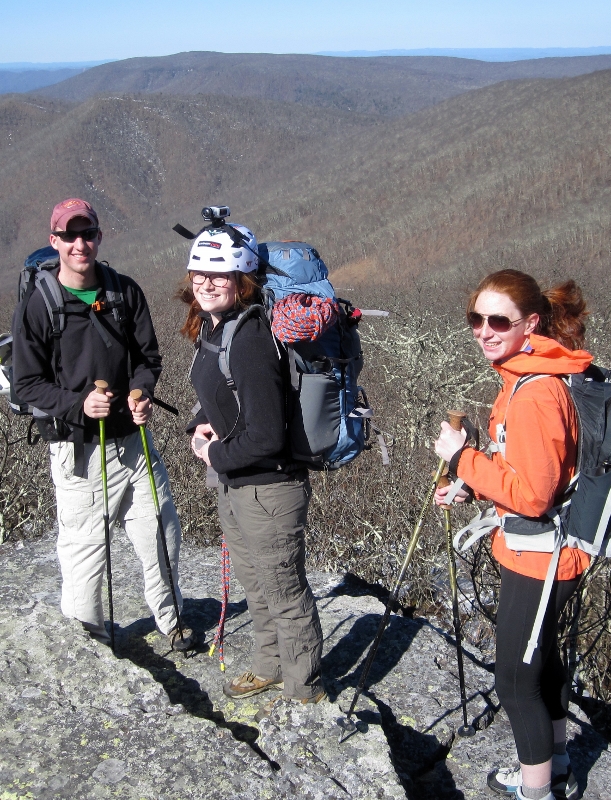
Geography, meteorology, and wildlife science students in Virginia Tech’s College of Natural Resources and Environment are preparing for courses to “climb peaks that scrape the sky,” in the words of geography instructor David Carroll.
This summer, Carroll and Lynn Resler, associate professor of geography, are running a new field course to the Cascade Mountains of Washington state, where the students will conduct alpine environment studies and be trained in safe alpine wilderness travel techniques, including glacier travel and crevasse rescue situations, through the American Alpine Institute.
“The Cascades field experience takes place at the rim of an active volcano amidst enormous mountains and glaciers with huge crevasses,” Carroll said. “This is different from any other field experience the university offers.”
Carroll specializes in meteorology while Resler’s focus is the dynamics of mountain environments. The goal of the mountain field course, offered for the first time by the Department of Geography, is to engage students in an intensive study of the landscape and weather of western North American mountain environments.
Students are currently attending a spring semester course to prepare for the trip, building a foundation of knowledge on the North Cascades environment as well as practicing physical training, cold-weather backpacking, and basic rope work and climbing skills.
“Our training will include some spectacular technical rock climbing on cliffs as high as 700 feet,” said Carroll.
Resler will be teaching students about the physical geography of the Cascade Mountains, particularly the 10,781-foot Mount Baker, prior to departure.
“That way when we get to the mountain, the students will have a basic knowledge of the physical geography of the region,” she said.
“During the summer field experience, the students will record weather variables, make notes about geomorphology and vegetation changes, and observe how these physical processes and properties change with elevation,” Resler added.
Weather permitting, the trip will culminate in a climb to the summit of Mount Baker. Beginning shortly after midnight, the team will rope up and climb via headlamp through the night, recording weather and GPS data as they ascend. They should reach the rim of the active Sherman Crater near daybreak and the summit of Mount Baker, the highest point in the North Cascades, early in the morning.
The students are expected to learn how complex mountain topography influences the dynamics of such physical systems as snow and ice, climate, plants, and animals over time and space, as well as the forces and events that formed Mount Baker.
The students will use navigation tools, from map and compass to modern GPS technology, for off-trail travel in backcountry areas. High-definition video cameras mounted on the helmets of two of the participants will record GPS location, elevation, air pressure, and temperature in addition to the spectacular views.
“The basic idea is to immerse the students in the study of the alpine and heavily glaciated environment of the North Cascades,” said Carroll. “As a part of the curriculum, we decided to add formal training in glacier travel and mountaineering in addition to the mountain and ecosystem studies.”
The students and faculty members will return to the mountains in summer 2015 on a trip to South America to study and climb peaks that are among the highest in the world outside of the Himalayas — more than 20,000 feet.
“Our philosophy is also one of commitment,” said Carroll. “The students will prepare for an entire semester before the North Cascades trip, and the follow-up trip to the Andes raises the stakes even higher as it will require a year of preparation time.”
“The Andes Mountains course will provide students with the opportunity to study mountain environments in an international setting, one that is currently front-and-center in the effects of climate change on high altitude environments,” he added.
“These field courses represent a two-year journey for the students, and committing themselves to a long-term goal that spans years instead of weeks or even months is a valuable life skill in itself,” Carroll concluded.
– Lynn Davis

